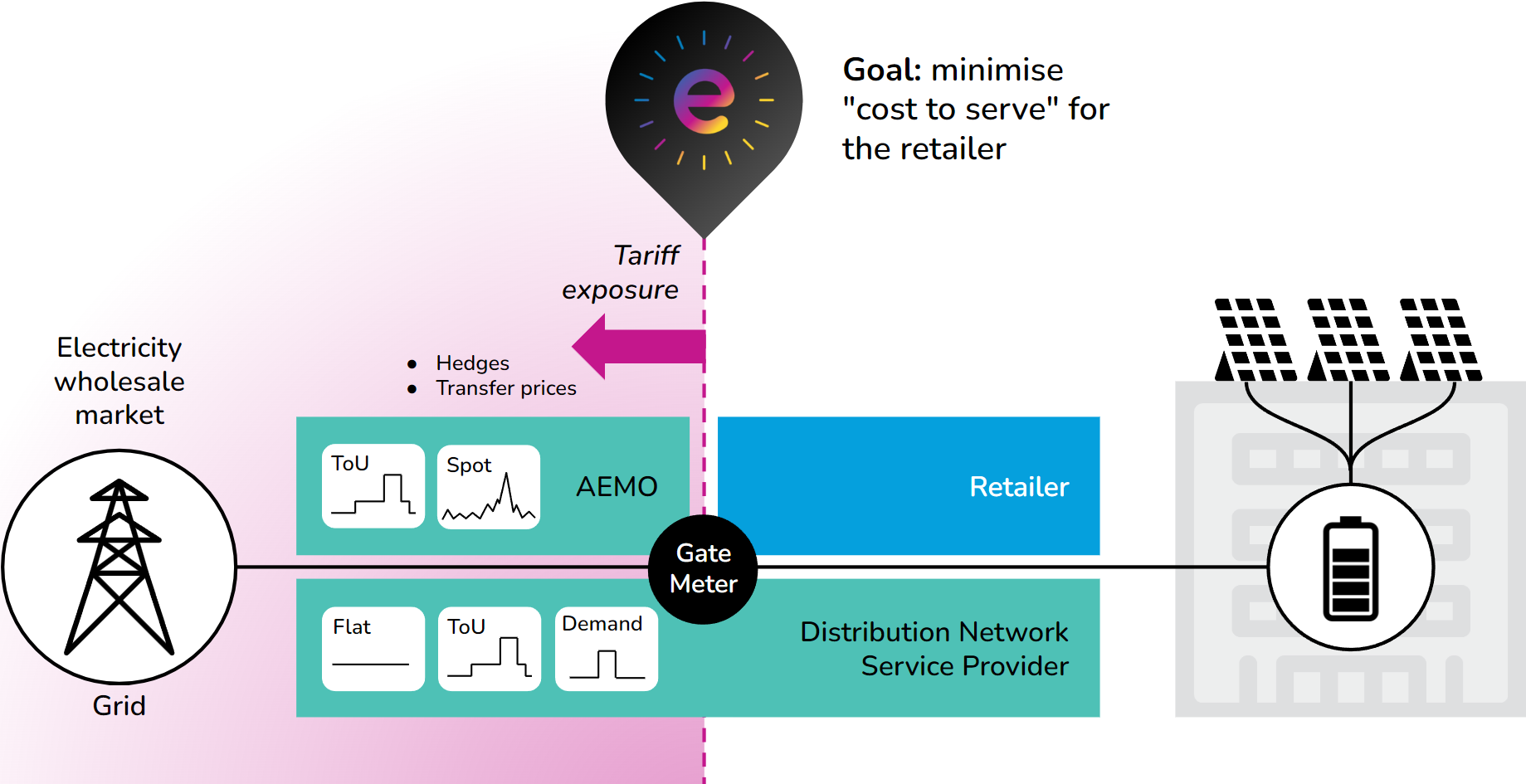Using Data For Effective Behind-the-meter (BTM) and In-front-of-the-meter (FOM) Battery Optimisation
Every second more than 200,000 telemetry data points are generated by households with solar PV systems in Australia. This mind-boggling amount of data only gets larger if we consider smart hot water systems, home batteries, electric vehicles and the increasing range of other smart devices that all connect to our electricity network. This rapidly growing dataset contains insights that could accelerate the renewable energy transition. However, extracting these insights is like finding needles in a haystack. This is where data science comes in and here, at Evergen, we are making full use of it to provide flexible and effective behind-the-meter (BTM) and in-front-of-the-meter (FOM) battery optimisation.
Data Science: A game-changer in the renewable energy transition
Amidst the surge in data generation, data science’s role in shaping the energy transition cannot be understated. By analysing historical data and extracting insights, data science can contribute to three critical aspects:
1 Enabling policymakers to create effective strategies for promoting renewable energy adoption and investment.
2 Assisting the planning of new infrastructure to support the increasing renewable energy generation and increased demand of a more electrified world.
3 Increasing the return on investment of renewable energy assets by enabling better operational decisions.
Energy storage technologies also have a critical role to play in balancing supply and demand and maintaining grid stability. However, they can only deliver their full potential if future demand and generation are known, allowing them to be charged in preparation for periods of increased demand and discharged before periods of oversupply. Data science solves this challenge by developing AI models that forecast supply, demand, and wholesale electricity prices. With these forecasts, the operational decisions of the storage device can be optimised to support the network and increase revenue.
Evergen’s data-driven solutions
At Evegen, AI is the core of our technology. We utilise advanced AI forecasting models and state-of-the-art mixed integer linear optimisation algorithms to improve the performance of Distributed Energy Resources (DERs). Furthermore, our data scientists run simulations of how different DERs will perform under various scenarios to assess performance and revenue generation.
The core of Evergen’s renewable energy solutions is behind-the-meter (BTM) and in-front-of-the-meter (FOM) optimisation. Behind-the-meter DERs are typically located on a customer’s site and operate to reduce the customer’s electricity costs. For instance, by storing energy on-site, BTM batteries can shift when energy needs to be imported from the network to lower electricity cost periods or reduce the need altogether by storing on-site solar generation. In contrast, FOM systems are integrated with the electricity network and are vital for overall energy supply and grid stability. These systems include utility-scale generation and energy storage. They take part in the wholesale electricity market as well as providing other network services such as FCAS.
BTM Optimisation for the Asset Owner

Optimisation for the Retailer

Aiding the energy transition with FOM and BTM optimisation
Optimisation of FOM and BTM DERs can help accelerate the renewable energy transition in several ways ranging from financial to providing compliance and accountability. From a purely financial perspective, DERs can be optimised with respect to different market signals, extracting more value from these resources and increasing the return on investment. This makes renewable energy more affordable to buy and invest in. Optimisation also allows systems to respond quickly to dynamic market conditions. This is financially positive but it also allows these systems to provide network services and improve grid stability, enabling more renewable generation to be integrated with the network. From a compliance perspective, optimisation can be designed to enforce all the constraints required by regulators, and it provides good accountability of why choices were made. Lastly, the obvious benefit is that the optimisation of energy storage assets can help balance supply and demand.
Case study: delivering joint homeowner and retailer benefit
In the increasingly renewable energy sector, there is regularly a high supply of solar generation through the day, followed by a period of higher demand typically from 5pm-8pm. This results in low (or even negative) wholesale energy prices in the day and high energy prices in the early evening. To incentivise energy supply during this period, several networks have implemented network feed-in tariffs. Battery systems are uniquely placed to take advantage of both the electricity spot market prices and the network feed-in tariffs by storing PV generation to export it at the highest prices between 5pm and 8pm. Taking advantage of Evergen’s flexible optimisation, we designed a product offering that passes along a substantial feed-in price to homeowners when their batteries export during this high-demand period. The optimisation ensures that the batteries only export when both the retailer and the homeowner will benefit.
Evergen’s role in the renewable energy transition
Evergen’s advanced energy management software platform uses machine learning algorithms to optimise and digitise the use of renewable energy assets across the entire energy chain. We provide a platform that customers can use to monitor and control their DERs. Our investment in data science means we provide advanced AI forecasting and state-of-the-art optimisation algorithms that maximise the benefit customers receive from their renewable energy resources and ultimately lead to greater investment returns.




